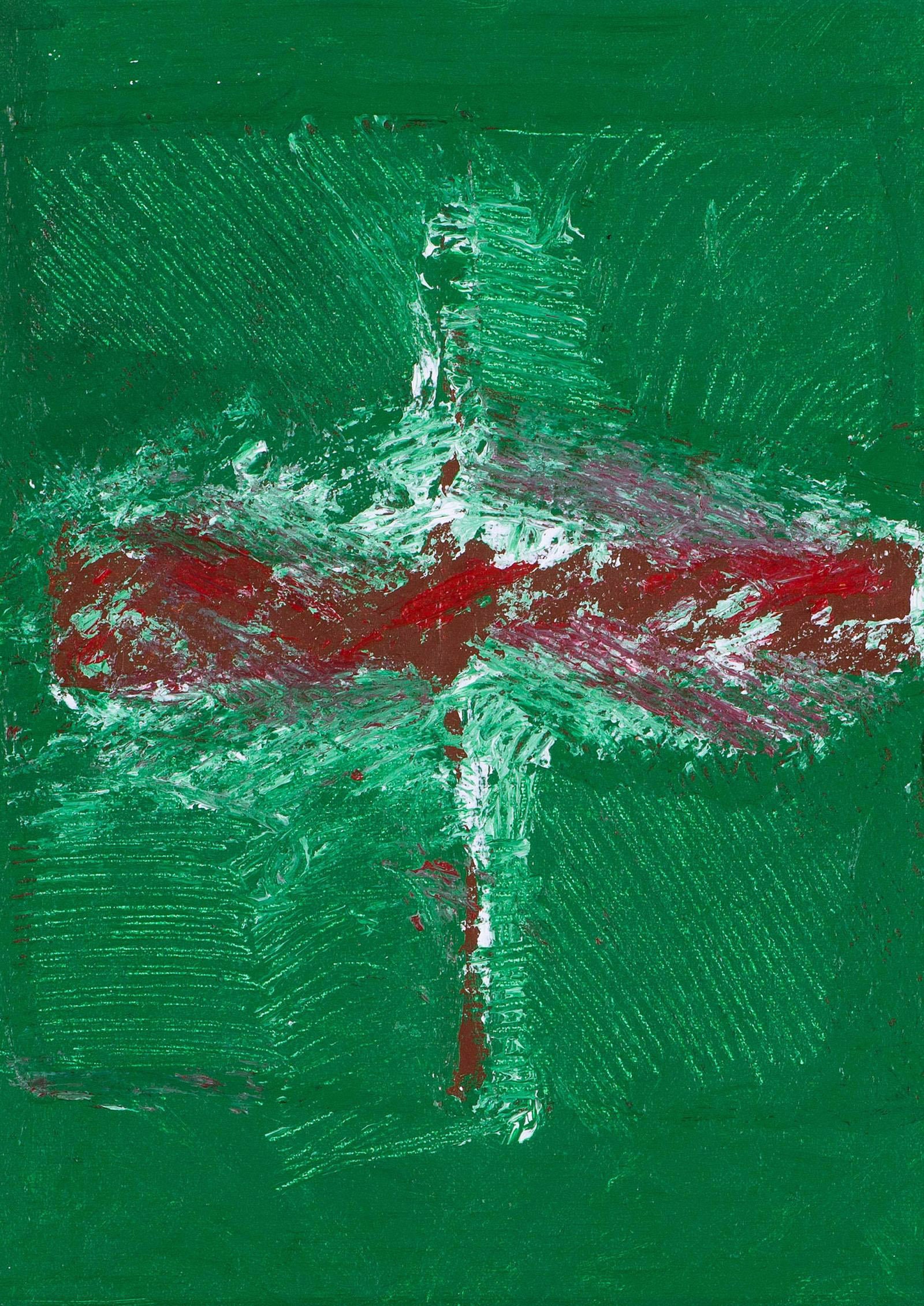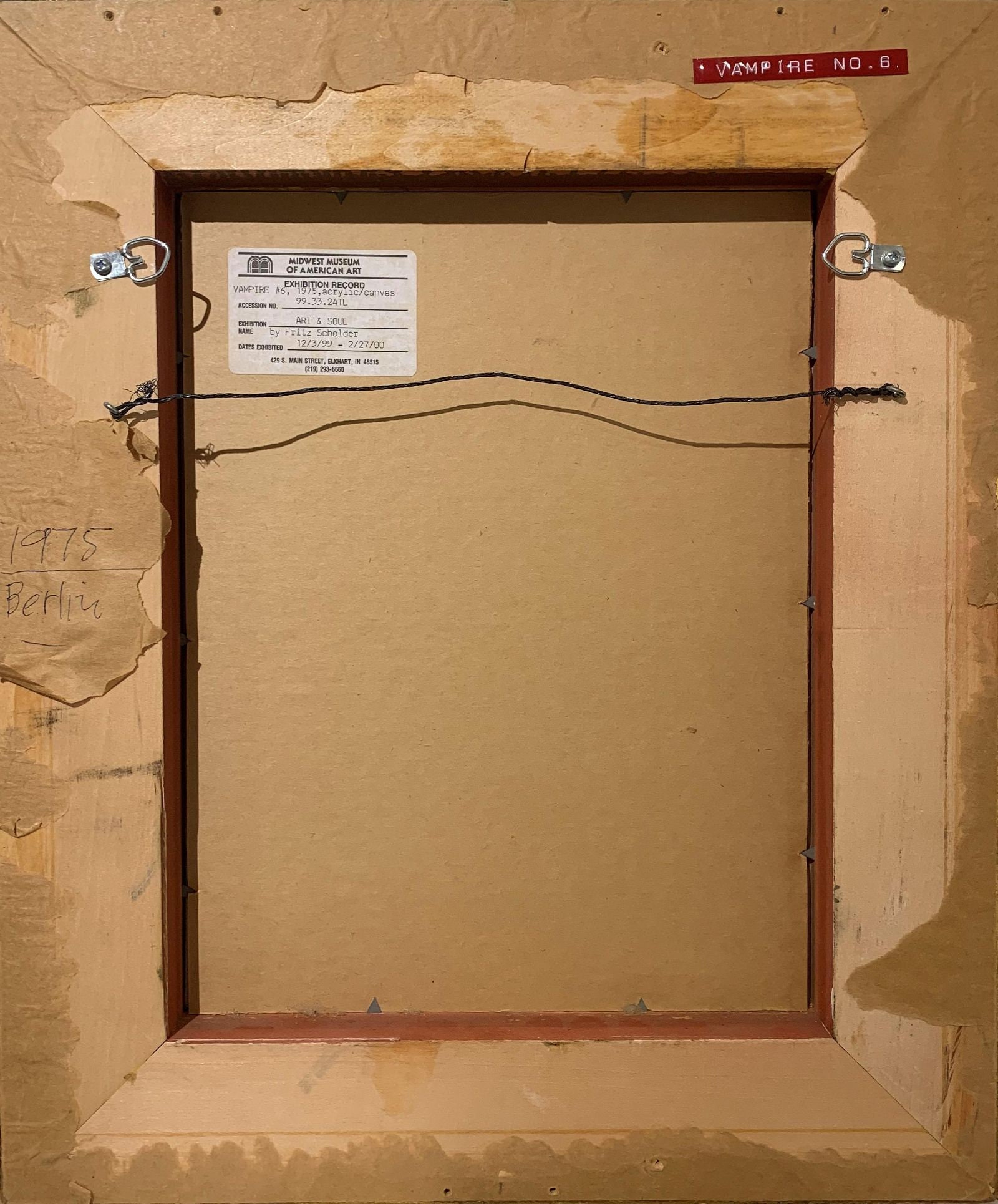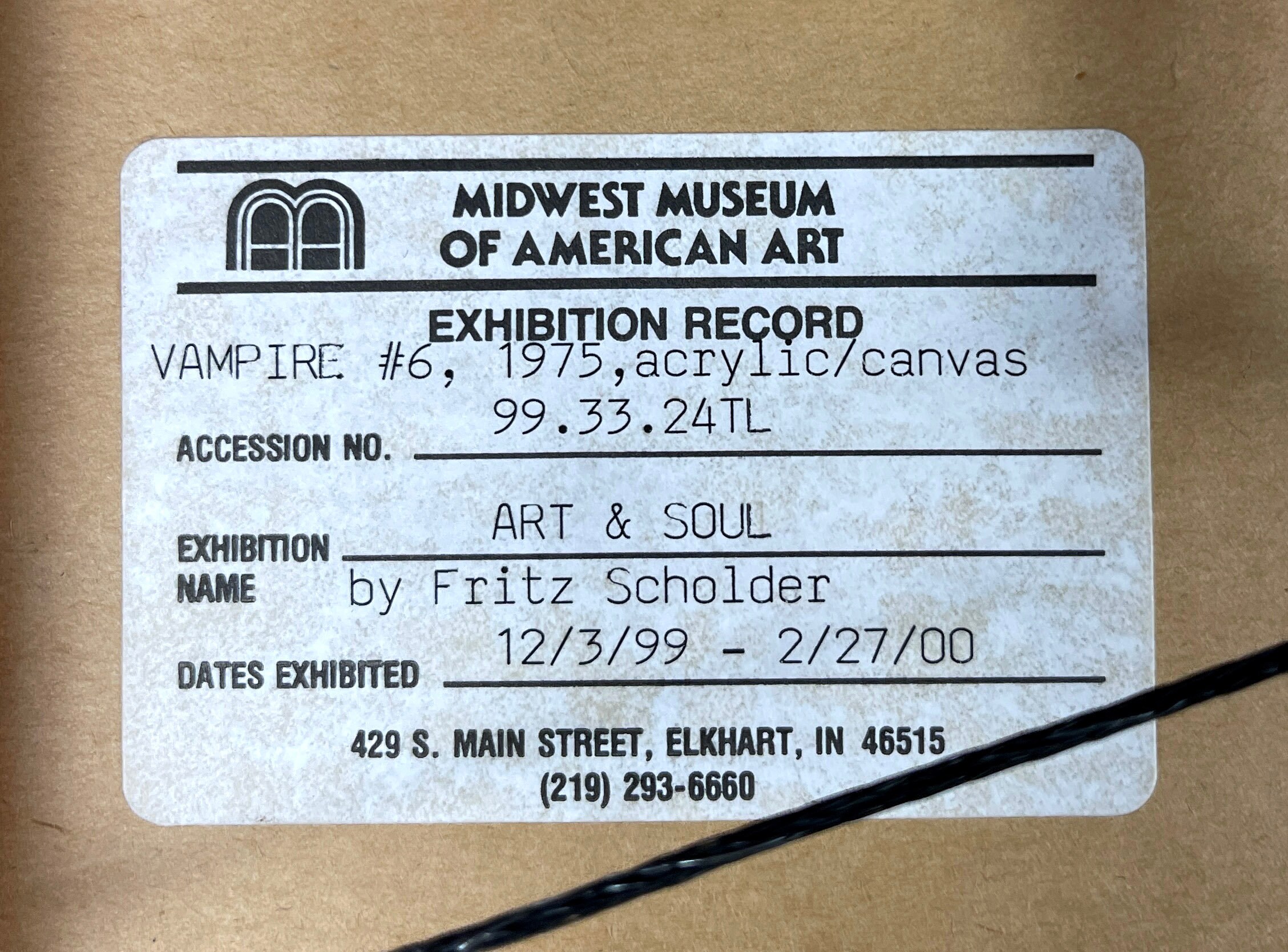FRITZ SCHOLDER "Vampire #6" Original Painting, Exhibited at the Midwest Museum
$8,500.00
FRITZ SCHOLDER
"Vampire #6"
Acrylic on Canvas
Exhibited at the MIDWEST MUSEUM OF AMERICAN ART
Artist: Fritz Scholder
Title: Vampire #6
Medium: Acrylic on canvas
Edition: Original painting, unique work
Year: 1975
Signed: Not signed
Accompanied by a gallery certificate of authenticity
Condition: Excellent
Provenance: MIDWEST MUSEUM OF AMERICAN ART
Exhibition record: Exhibited at the MIDWEST MUSEUM OF AMERICAN ART
Exhibition name: ART & SOUL by Fritz Scholder
Dates exhibited: 12/3/99 - 2/27/2000
Framed size : 18 1/4" X 15 1/4"
Artwork: 13 1/4" X 10 1/4"
Artwork will be shipped crated and insured
A prolific painter, sculptor, lithographer, teacher, mentor and bookmaker; Fritz Scholder changed Native American art forever.
His love of teaching caused him to become a major influence on an entire generation of Native American artists and created the foundation of what is now known as contemporary American Indian art.
The most recognized and collected Contemporary Artist in the Southwest
Exhibitions of his work were seen in Japan, France, China, Germany, at the Hermitage Museum in St. Petersburg, Russia, and many other countries.
His work is included in many public and private collections including the Boston Fine Arts Museum; The Hirschhorn Museum of Fine Arts, Washington, D.C; the National Collection of Fine Arts, Smithsonian Institute and the Museum of Modern Art, New York
Fritz Scholder
(1937-2005)
Fritz Scholder's frank depictions of American Indians made him the most successful and highly regarded painter of Native Americans in U.S. history. Arguably the genre's most influential figure, Scholder revitalized and reconfigured "Indian art," forging a unique amalgamation of Expressionism, Color Field, and Pop art to convey his singular take on the experience of the modern American Indian.
He created the foundation of what is now known as contemporary American Indian art
Scholder was one-quarter Luiseño, a California Mission tribe, but he said he grew up "non-Indian." Born in Breckenridge, Minnesota, Scholder spent his childhood across the Midwest, where he developed a passion for drawing and painting. When the family settled in Sacramento in the late 1950s, Scholder studied at Sacramento City College with the celebrated Bay Area artist Wayne Thiebaud, who exposed him to the Pop art movement and also arranged his first solo exhibition. At a time when Native American art was dominated by romantic portrayals of the stoic and invariably head-dressed Indian Brave, Scholder imagined the Native American subjects of his paintings with cigarettes, beer cans, and dark glasses, in pickup trucks and blue jeans. In turns elegant and radical, Scholder explored Native American identity with poignancy and bravery. His palette of lime greens, blazing oranges, and moody blues masterfully evokes quintessentially American feelings of discovery and rebirth.
Scholder's vigorous and confidant paint application brings to mind the work of Abstract Expressionists Franz Kline and de Kooning; elsewhere anthropomorphized animal forms and somber portraits recall the dark figuration of Francis Bacon and the edginess of Edvard Munch. Beloved Native American writer N. Scott Momaday called Scholder "private, dark and mercurial… He did not lift the spirits, he awoke them."
Fritz Scholder died in 2005 at the age of 67. He received a B.A. from Sacramento State College in 1960 and an M.F.A. from the University of Arizona in 1964. Over a dozen books have been published on Scholder and his work, and he has been profiled in two documentaries for public television. In a single year, exhibitions of his work were seen in Japan, France, China, Germany, and at the Hermitage Museum in St. Petersburg, Russia.
In 2008, the Smithsonian Institution's National Museum of the American Indian mounted an unprecedented dual-city career retrospective in both New York City and Washington, D.C. His awards include fellowships from the Ford, Rockefeller and Whitney foundations. His art is in the permanent collections of major museums, including the National Gallery and the National Museum of American Art in Washington and the Museum of Modern Art in New York.




